Birds of prey, also known as raptors, play a vital ecological role in North Dakota’s diverse and expansive landscape. With its vast prairies, wetlands, and forests, North Dakota provides an ideal habitat for various raptor species.
These majestic birds, known for their sharp talons, keen eyesight, and powerful aerial abilities, have unique adaptations that make them formidable hunters.
North Dakota has a rich array of raptors, from the iconic Bald Eagle soaring above the rivers and lakes to the sleek Peregrine Falcon diving at astonishing speeds.
We will explore the fascinating world of birds of prey in North Dakota, their ecological significance, and the conservation efforts to protect these awe-inspiring creatures.
21 Birds of Prey in North Dakota
North Dakota, with its diverse habitats ranging from grasslands to wetlands, supports a variety of birds of prey. Here are 21 species of raptors that can be found in North Dakota:
1. Red-tailed Hawk (Buteo jamaicensis)
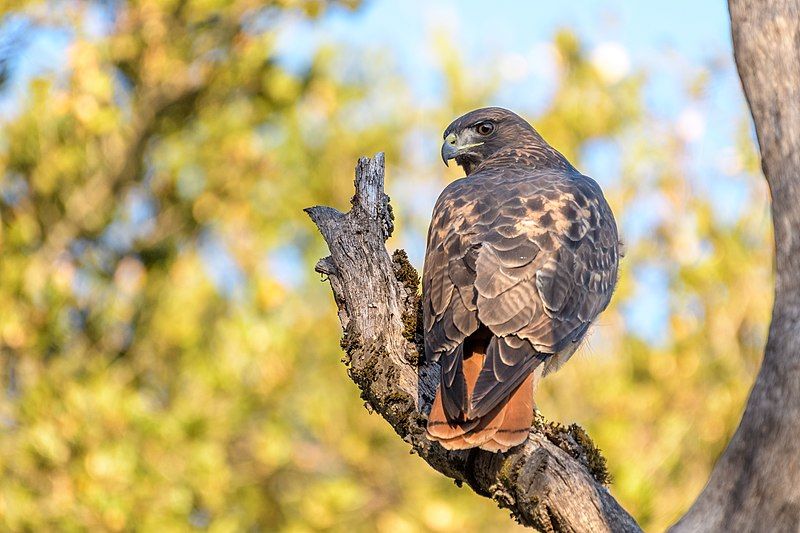
The Red-tailed Hawk is a bird of prey that belongs to the genus Buteo and is widely distributed across North America. It is recognized for its distinctive reddish-brown tail, contrasting with its brown and white plumage body.
This species adapts to a wide range of habitats, from deserts to woodlands and tropical rainforests, making it one of the most common hawks in North America.
Red-tailed Hawks are known for their soaring flight, keen vision, and versatility in hunting and feeding on small mammals, birds, and reptiles. They play a vital role in the ecosystem as apex predators, helping control rodent populations.
| Kingdom | Animalia |
| Phylum | Chordata |
| Clade | Dinosauria |
| Class | Aves |
| Order | Accipitriformes |
| Family | Accipitridae |
| Genus | Buteo |
| Species | B. jamaicensis |
2. American Kestrel (Falco sparverius)
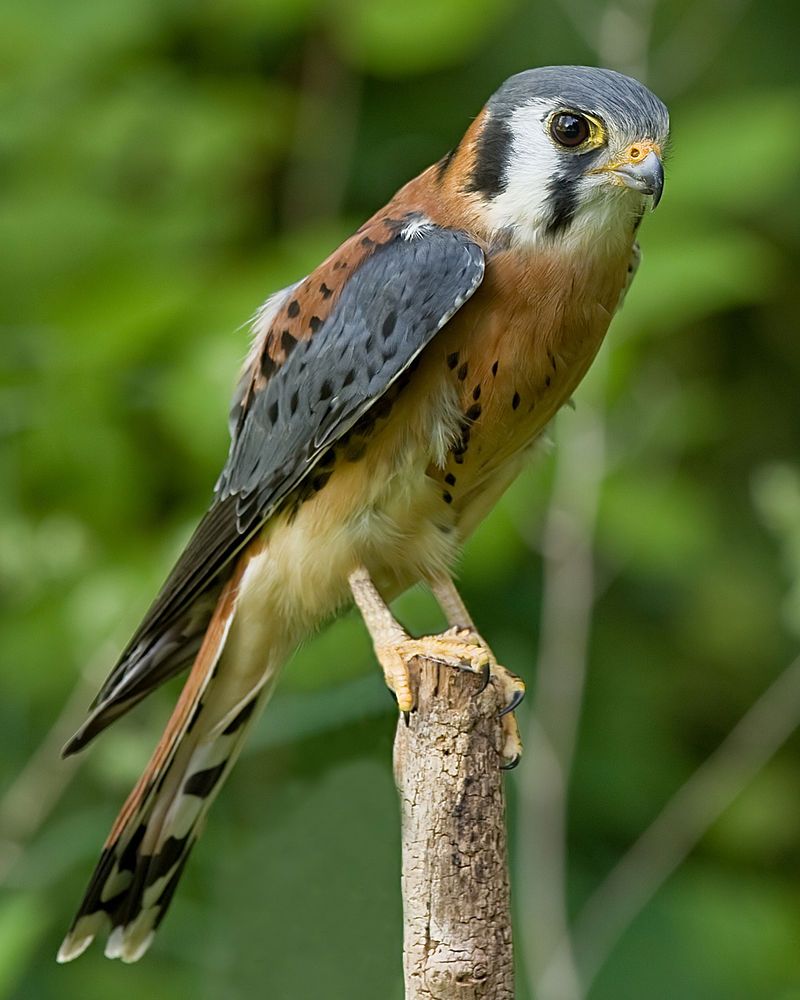
| Kingdom | Animalia |
| Phylum | Chordata |
| Class | Aves |
| Order | Falconiformes |
| Family | Falconidae |
| Genus | Falco |
| Species | F. sparverius |
3. Rough-legged Buzzard (Buteo lagopus)
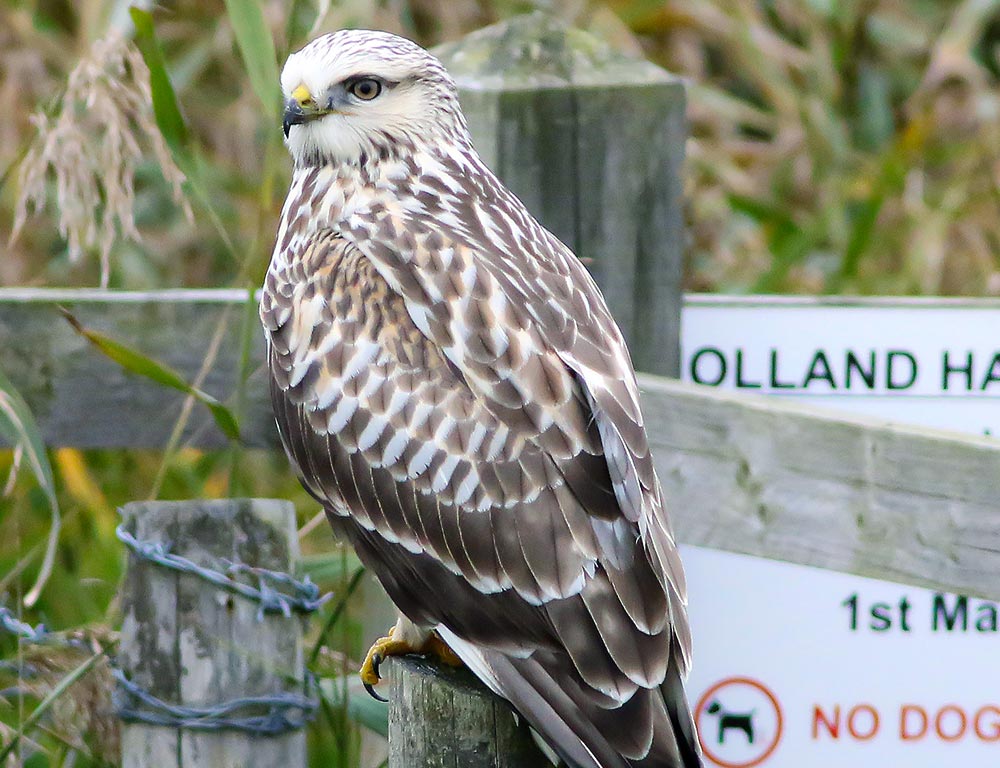
The Rough-legged Buzzard, known in North America as the Rough-legged Hawk, is a medium to large bird of prey in the genus Buteo.
This species is remarkable for its long-distance migrations, breeding in North America’s and Eurasia’s Arctic tundra and wintering in more temperate regions.
It has a distinctive appearance with variable plumage, often showing a combination of dark and light patterns, feathered legs (hence its name), and broad wings adapted for soaring.
The Rough-legged Buzzard is versatile in hunting, preying mainly on small mammals such as lemmings and voles. Its presence in a region is often a key indicator of the health of arctic and boreal ecosystems.
| Kingdom | Animalia |
| Phylum | Chordata |
| Class | Aves |
| Order | Accipitriformes |
| Family | Accipitridae |
| Genus | Buteo |
| Species | B. lagopus |
4. Bald Eagle (Haliaeetus leucocephalus)

The Bald Eagle, with its scientific name Haliaeetus leucocephalus, is a powerful symbol of the United States, representing freedom and strength.
This majestic bird of prey is identifiable by its white head and tail contrasting against its dark brown body and wings.
Primarily a fish eater, the Bald Eagle has adapted to various habitats across North America, from Alaska’s shores to the Florida Keys.
These eagles are known for their impressive nest structures, which are among the largest of any bird species, and their remarkable recovery from near extinction in the mid-20th century, showcasing successful conservation efforts.
| Kingdom | Animalia |
| Phylum | Chordata |
| Class | Aves |
| Order | Accipitriformes |
| Family | Accipitridae |
| Genus | Haliaeetus |
| Species | H. leucocephalus |
5. Cooper’s Hawk (Accipiter cooperii)
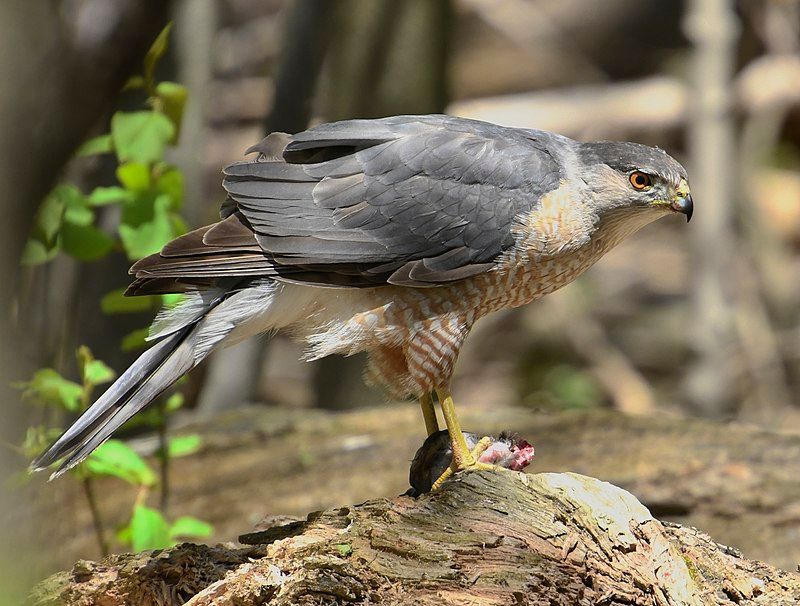
Cooper’s Hawk, scientifically named Accipiter cooperii, is a medium-sized hawk native to North American forests and urban areas.
Characterized by its slate-grey back, reddish-barred chest, and long, rounded tail with bands, Cooper’s Hawk is adept at manoeuvring through dense foliage to catch birds and small mammals, making it a skilled predator.
While once persecuted due to perceived threats to poultry, their populations have rebounded, and they are now common sights in both rural and urban settings.
Cooper’s Hawks have adapted well to human environments, utilizing urban areas as hunting grounds.
| Kingdom | Animalia |
| Phylum | Chordata |
| Class | Aves |
| Order | Accipitriformes |
| Family | Accipitridae |
| Genus | Accipiter |
| Species | A. cooperii |
6. Northern Goshawk (Accipiter gentilis)
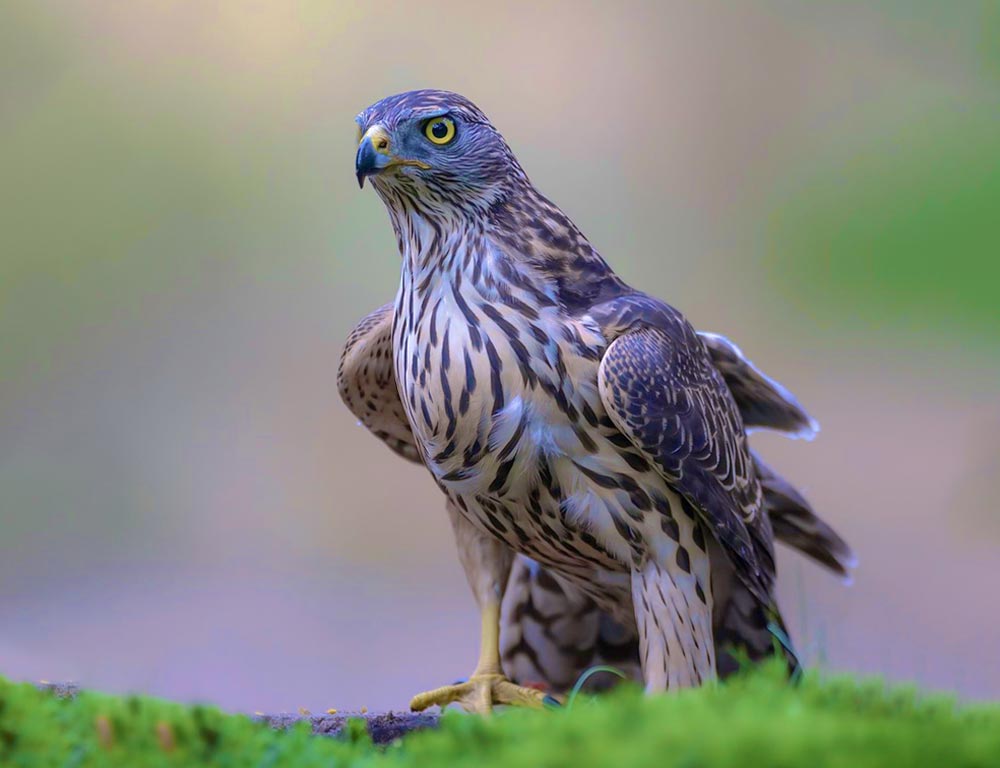
The Northern Goshawk, Accipiter gentilis, is the largest member of the genus Accipiter and is a formidable bird of prey found across the Northern Hemisphere.
This species is known for its striking appearance, with adults displaying a blue-grey back, a white breast with fine grey barring, and a distinctive white stripe over the eye.
Northern Goshawks inhabit dense forests where they are skilled hunters, preying on various birds and mammals, demonstrating remarkable agility in flight.
They fiercely protect their nesting sites, often aggressively defending their territory against intruders. The Northern Goshawk is admired for its prowess and symbolises wilderness.
| Kingdom | Animalia |
| Phylum | Chordata |
| Class | Aves |
| Order | Accipitriformes |
| Family | Accipitridae |
| Genus | Accipiter |
| Species | A. gentilis |
7. Sharp-shinned Hawk (Accipiter striatus)
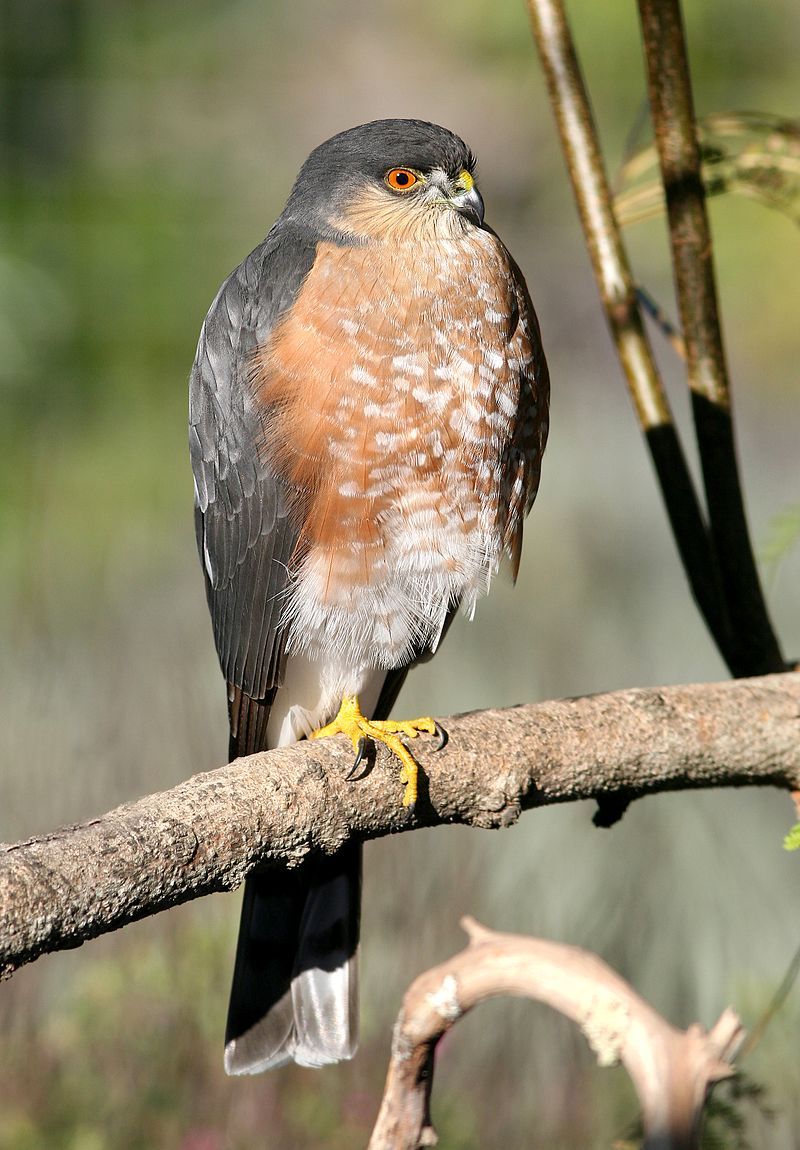
| Kingdom | Animalia |
| Phylum | Chordata |
| Class | Aves |
| Order | Accipitriformes |
| Family | Accipitridae |
| Genus | Accipiter |
| Species | A. striatus |
8. Ferruginous Hawk (Buteo regalis)
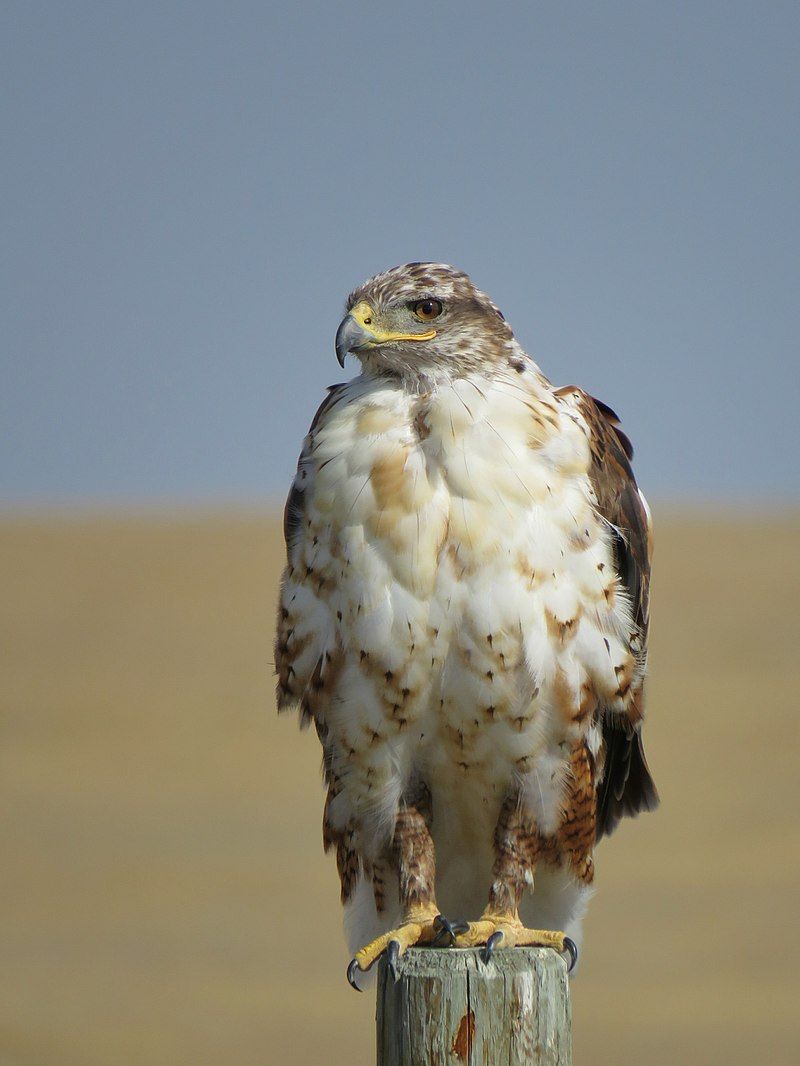
The Ferruginous Hawk, Buteo regalis, is the largest of the North American Buteo hawks, distinguished by its rusty-red back and shoulders, white underparts, and broad wingspan.
This raptor prefers open, arid landscapes such as grasslands and deserts, where it hunts rodents, rabbits, and birds.
The Ferruginous Hawk is notable for its two morphs: a light morph, displaying the characteristic rusty plumage, and a dark morph, which is less common and mostly uniformly dark.
Their nests are typically built on the ground or in low shrubs, reflecting their adaptation to tree-scarce environments. Despite habitat loss and degradation, conservation efforts aim to maintain population levels.
| Kingdom | Animalia |
| Phylum | Chordata |
| Class | Aves |
| Order | Accipitriformes |
| Family | Accipitridae |
| Genus | Buteo |
| Species | B. regalis |
9. Burrowing Owl (Athene cunicularia)
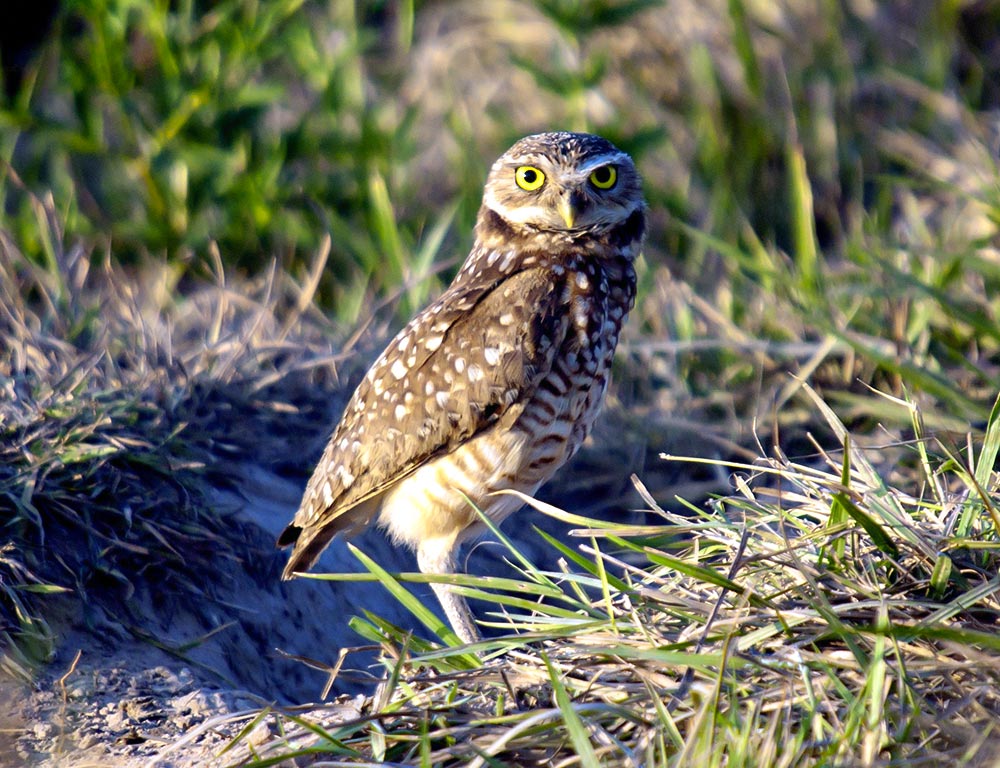
Athene cunicularia, commonly known as the Burrowing Owl, is a small, ground-dwelling bird with long legs and a distinctive white eyebrow mark.
Unlike other owls, it is active during the day, especially in the breeding season. This species is unique for utilizing existing burrows excavated by ground squirrels or prairie dogs in open habitats such as grasslands, deserts, and agricultural areas.
The Burrowing Owl feeds on insects, small mammals, and reptiles. Its ability to adapt to human-modified landscapes has allowed it to survive in areas where other species have declined. However, its dependence on burrow habitats makes it vulnerable to land-use changes.
| Kingdom | Animalia |
| Phylum | Chordata |
| Class | Aves |
| Order | Strigiformes |
| Family | Strigidae |
| Genus | Athene |
| Species | A. cunicularia |
10. Golden Eagle (Aquila chrysaetos)

The Golden Eagle, Aquila chrysaetos, is one of the most powerful predators in the avian world, inhabiting open and semi-open areas across the Northern Hemisphere.
This eagle is easily recognized by its dark brown body with lighter golden-brown plumage on its head and neck. Golden Eagles are versatile hunters, preying on medium-sized mammals, birds, and reptiles.
They are known for their incredible flight skills, capable of high-speed pursuits and soaring. Golden Eagles mate for life, often using the same nest for several years, which they build on cliff faces or in tall trees.
Despite their wide range, habitat destruction and persecution threaten their populations in some areas.
| Kingdom | Animalia |
| Phylum | Chordata |
| Class | Aves |
| Order | Accipitriformes |
| Family | Accipitridae |
| Genus | Aquila |
| Species | A. chrysaetos |
11. Swainson’s Hawk (Buteo swainsoni)
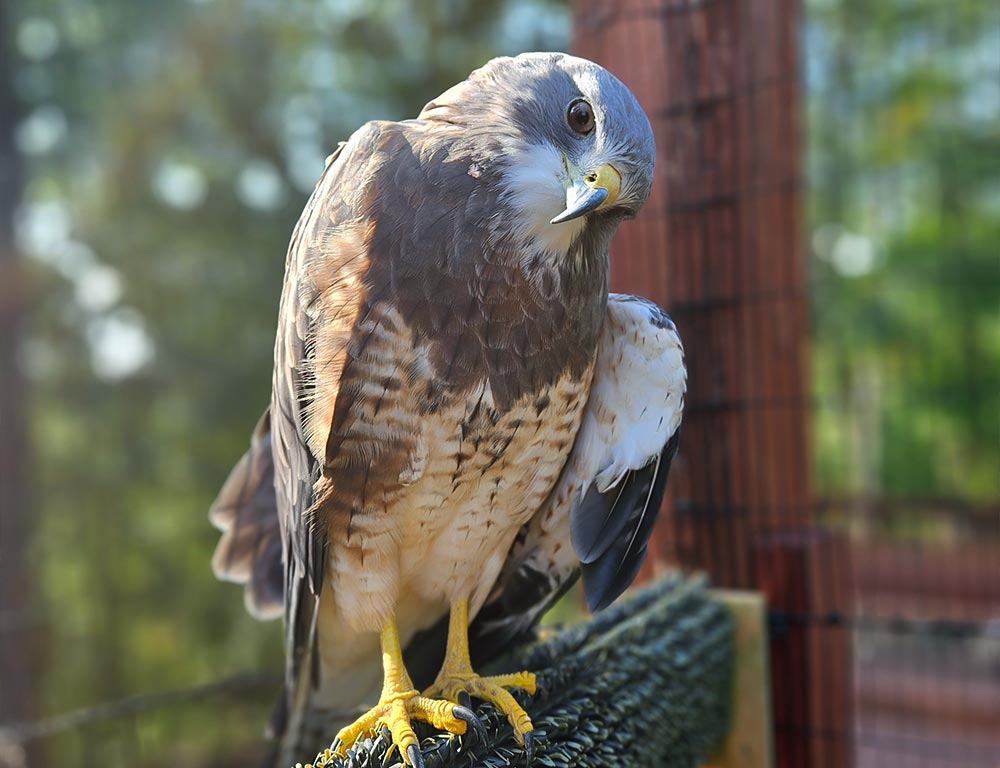
Swainson’s Hawk, Buteo swainsoni, is a long-distance migrant traveling from North America to South America yearly, one of the longest migrations of any American raptor.
This bird of prey exhibits two main colour morphs, light and dark, with the light morph having a white underbelly and dark chest band and the dark morph being uniformly dark brown.
Swainson’s Hawk prefers open landscapes such as grasslands and agricultural fields, where it hunts insects, small mammals, and birds.
Its diet shifts dramatically during migration when it can often be seen in large flocks feeding on swarms of insects.
The conservation of Swainson’s Hawk requires international cooperation due to its extensive migratory pattern.
| Kingdom | Animalia |
| Phylum | Chordata |
| Class | Aves |
| Order | Accipitriformes |
| Family | Accipitridae |
| Genus | Buteo |
| Species | B. swainsoni |
12. Great Horned Owl (Bubo virginianus)
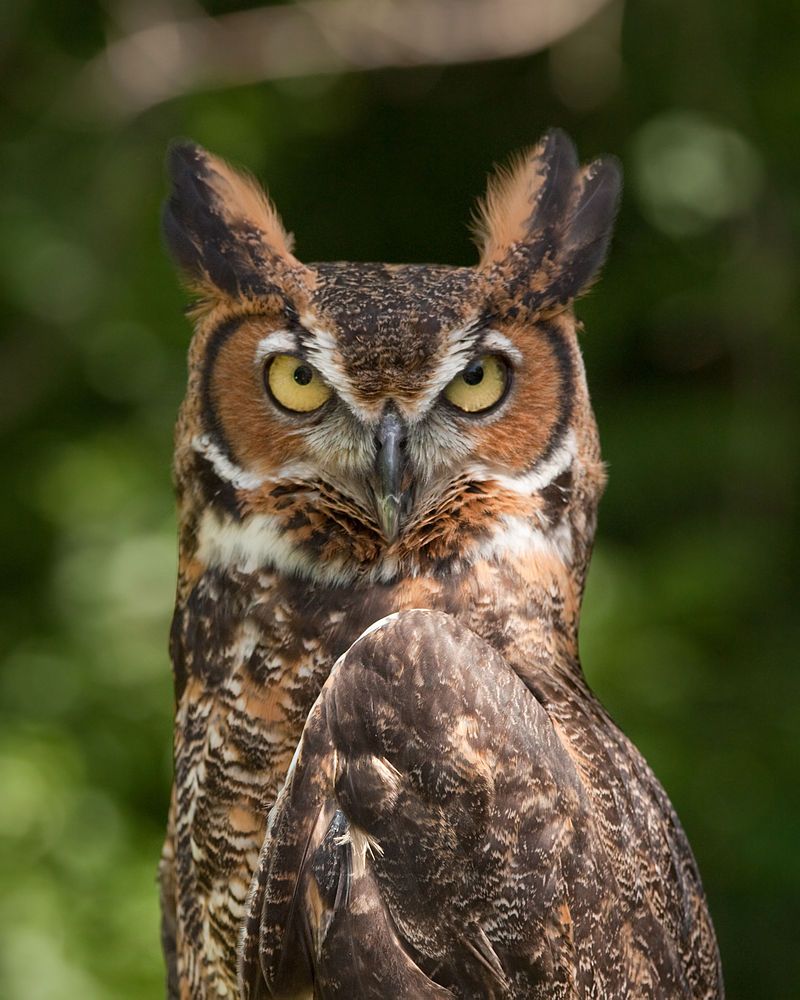
| Kingdom | Animalia |
| Phylum | Chordata |
| Class | Aves |
| Order | Strigiformes |
| Family | Strigidae |
| Genus | Bubo |
| Species | B. virginianus |
13. Broad-winged Hawk (Buteo platypterus)
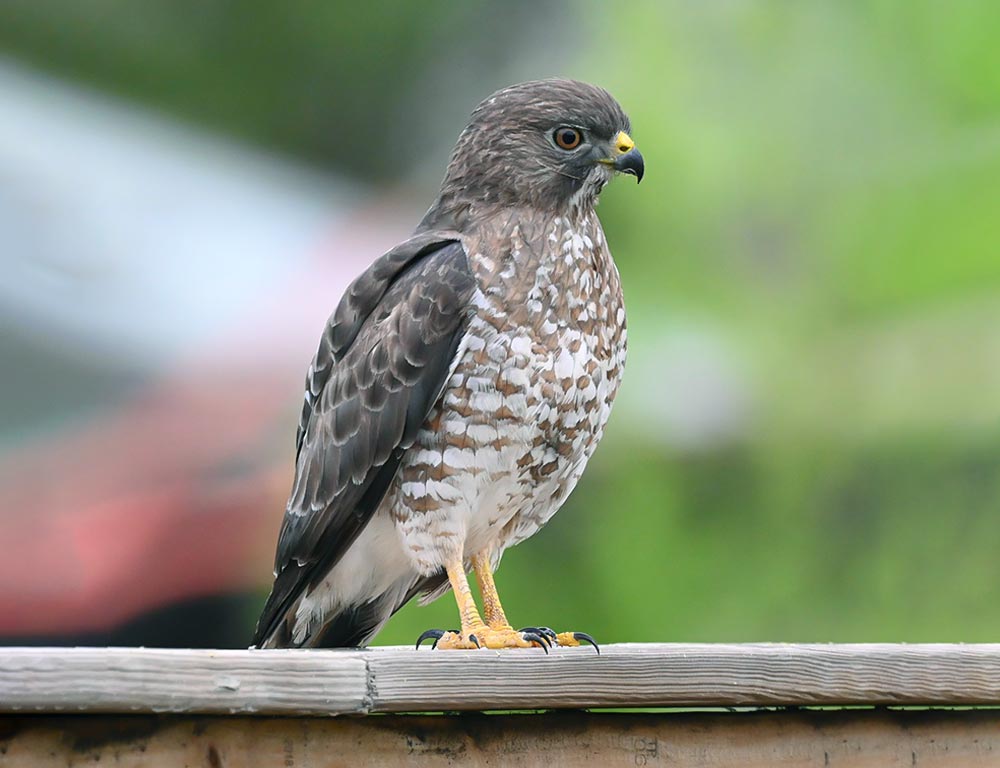
The Broad-winged Hawk, Buteo platypterus, is a small raptor known for its strikingly barred plumage and broad wings.
This hawk breeds in forested areas across North America, migrating in large groups, or “kettles,” to Central and South America for the winter.
Its plumage is characterized by a rufous underbelly with white and black bars, making it distinctive among hawks. Broad-winged Hawks feed on small mammals, insects, and amphibians, often hunting from a perch in dense woodland.
Their annual migration is one of the most spectacular natural events, where thousands can be seen soaring together, utilizing thermal updrafts to travel long distances with minimal energy expenditure.
| Kingdom | Animalia |
| Phylum | Chordata |
| Class | Aves |
| Order | Accipitriformes |
| Family | Accipitridae |
| Genus | Buteo |
| Species | B. platypterus |
14. Red-shouldered Hawk (Buteo lineatus)

Buteo lineatus, the Red-shouldered Hawk, is a medium-sized raptor that inhabits wooded areas and wetlands across eastern North America. It is easily identifiable by its rich, rufous-coloured shoulders, striped tail, and loud, distinctive kee-ah call.
This hawk is highly territorial and vocal, especially near its nest site. Red-shouldered Hawks are skilled hunters, preying on small mammals, amphibians, and reptiles, often hunting along the edge of woods and water.
They play an important role in controlling rodents and other small animal populations, contributing to the balance of their ecosystems. Their presence is also an indicator of healthy wetlands and forest habitats.
| Kingdom | Animalia |
| Phylum | Chordata |
| Class | Aves |
| Order | Accipitriformes |
| Family | Accipitridae |
| Genus | Buteo |
| Species | B. lineatus |
15. Prairie Falcon (Falco mexicanus)
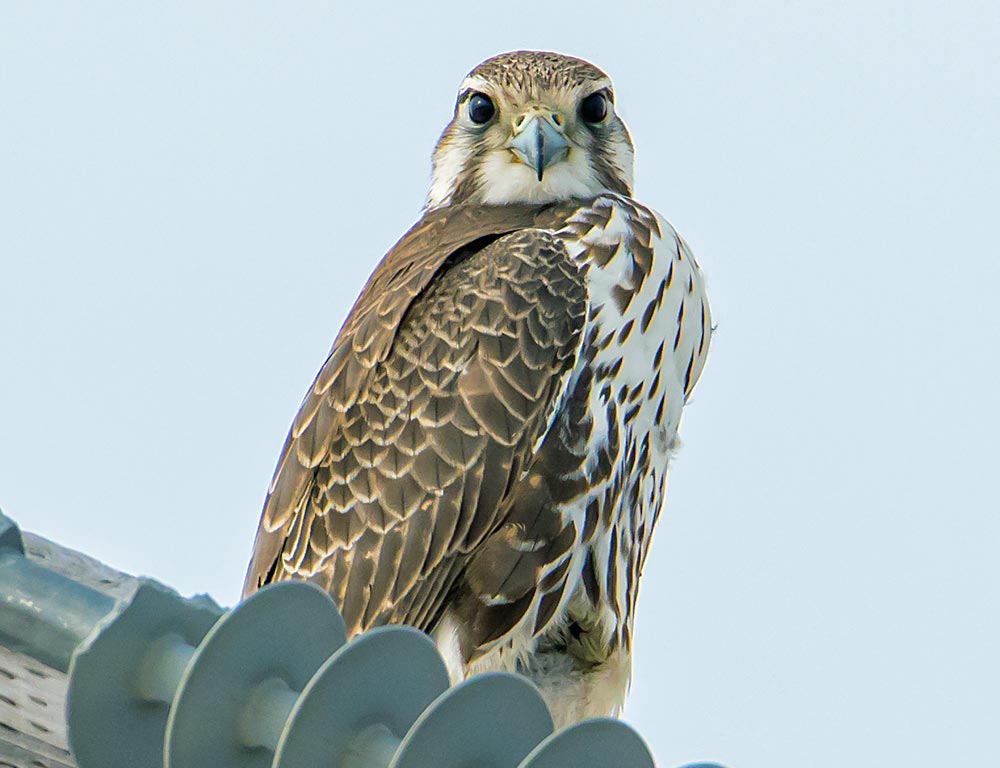
The Prairie Falcon, Falco Mexicans, is a medium-sized falcon across western North America in open landscapes, such as deserts, grasslands, and prairies.
This bird is distinguished by its creamy underparts, dark brown spots, and a striking moustache mark. Prairie Falcons are formidable hunters, preying on small mammals and birds, showcasing remarkable speed and agility in flight.
They often nest on cliff faces or in small caves, laying their eggs directly on the ground. Despite their fierce hunting capabilities, Prairie Falcons rely on specific habitat conditions, making them sensitive to environmental changes, such as land development and agriculture.
| Kingdom | Animalia |
| Phylum | Chordata |
| Class | Aves |
| Order | Falconiformes |
| Family | Falconidae |
| Genus | Falco |
| Species | F. mexicanus |
16. Peregrine Falcon (Falco peregrinus)
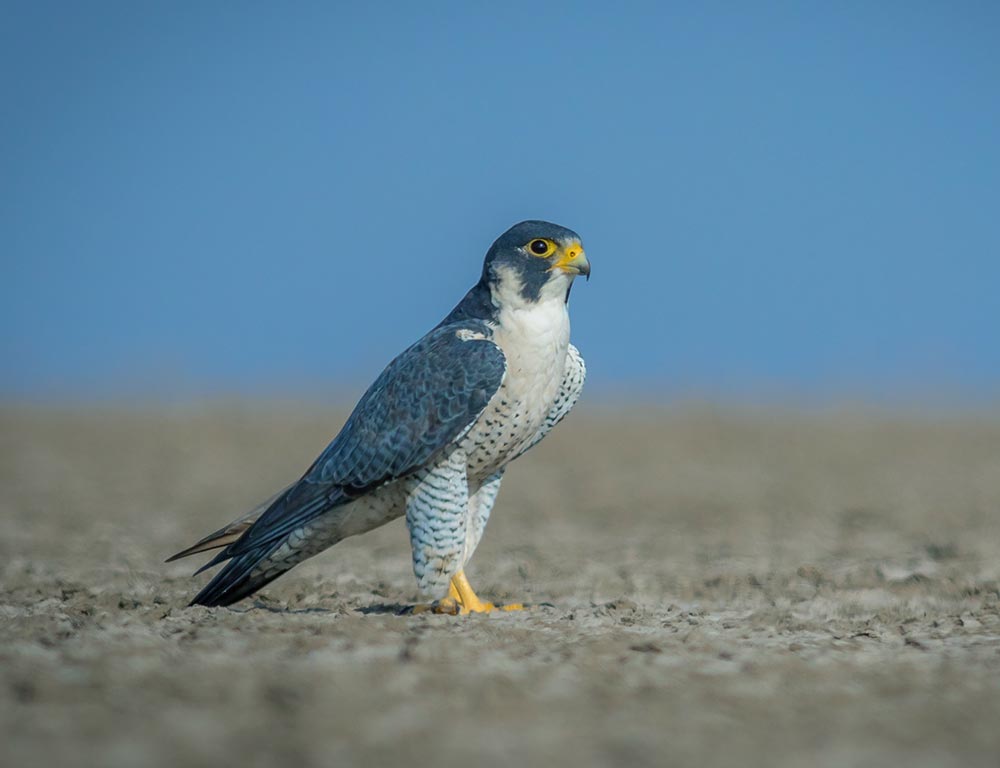
Falco peregrinus, known as the Peregrine Falcon, is renowned for being the fastest bird in the world, capable of reaching speeds over 240 mph during its hunting stoop.
This bird of prey inhabits a wide range of environments, from urban skyscrapers to remote mountains across the globe. Peregrine Falcons have a blue-grey back, barred white underparts, and a black head with distinctive facial markings.
They feed primarily on birds, which they catch in mid-air, demonstrating incredible aerial agility. Conservation efforts have successfully brought the Peregrine Falcon back from the brink of extinction, making it a conservation success story.
| Kingdom | Animalia |
| Phylum | Chordata |
| Class | Aves |
| Order | Falconiformes |
| Family | Falconidae |
| Genus | Falco |
| Species | F. peregrinus |
17. Owl
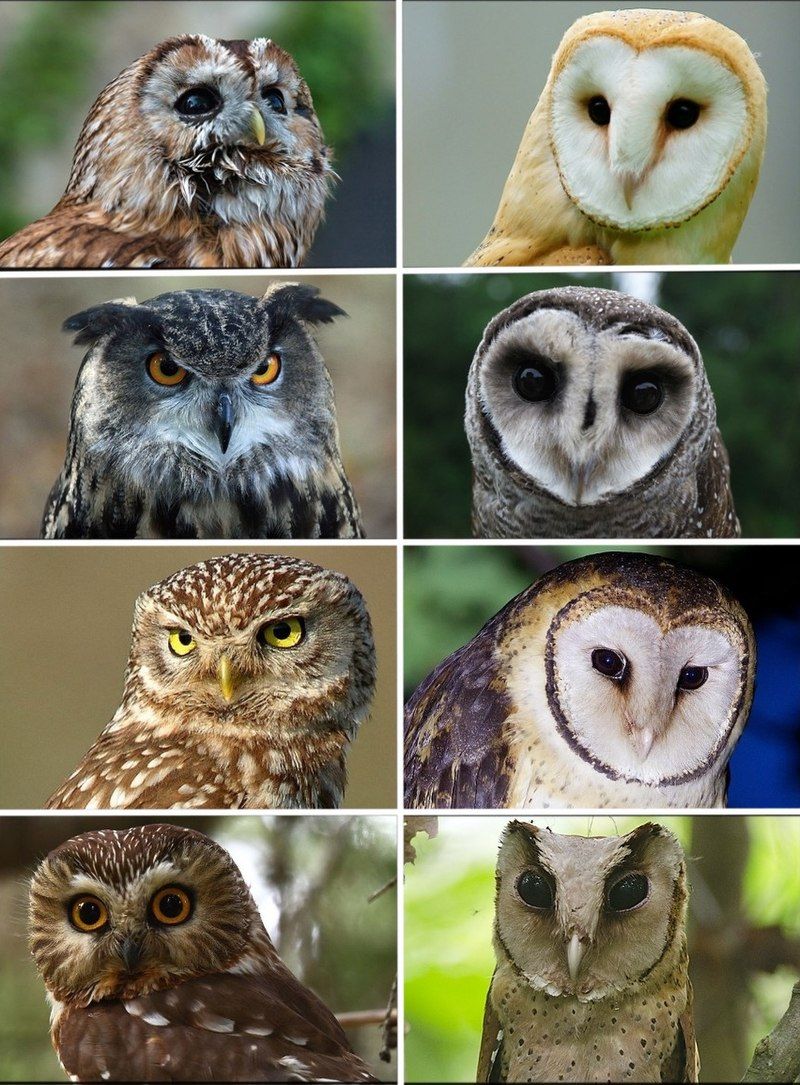
Owls are nocturnal birds of prey found worldwide, characterized by their distinctive facial discs, forward-facing eyes, and silent flight.
They belong to the order Strigiformes, which is divided into two families: Tytonidae (barn owls) and Strigidae (true owls).
Owls have adapted to various habitats, from dense forests to open prairies. Their diet varies widely, including rodents, insects, and other small animals, which they hunt using their acute hearing and night vision.
Owls play a crucial role in maintaining the balance of ecosystems by controlling rodent populations. Their mysterious nature and haunting calls have made them subjects of folklore and myth in many cultures.
| Kingdom | Animalia |
| Phylum | Chordata |
| Class | Aves |
| Clade | Telluraves |
| Order | Strigiformes |
18. Northern Harrier (Circus hudsonius)
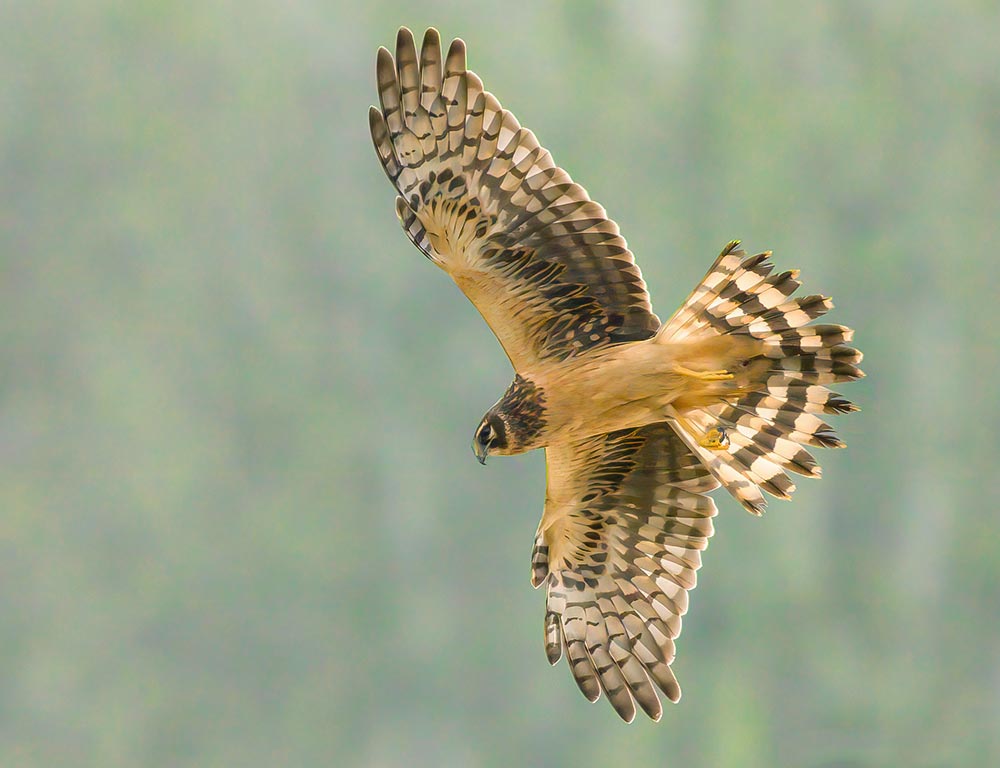
| Kingdom | Animalia |
| Phylum | Chordata |
| Class | Aves |
| Order | Accipitriformes |
| Family | Accipitridae |
| Genus | Circus |
| Species | C. hudsonius |
19. Falcon
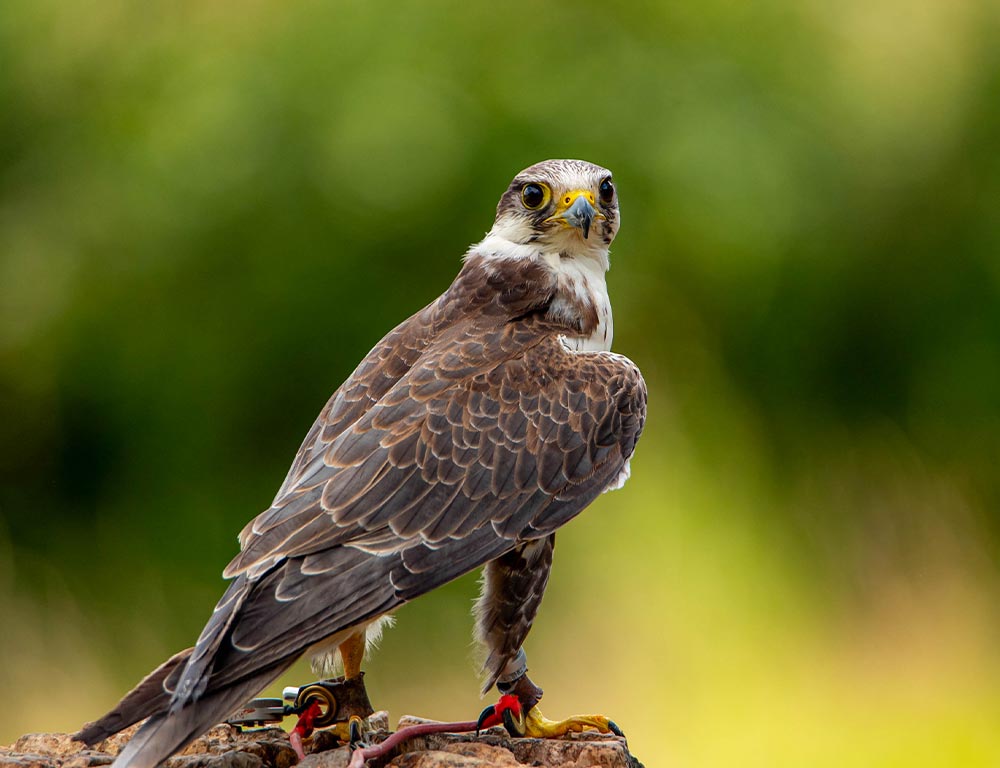
Falcons are small to medium-sized birds of prey from the genus Falco, known for their incredible speed and agility in the air.
These raptors are characterized by their sharp, hooked beaks, long, pointed wings, and powerful flying abilities, making them adept hunters capable of catching prey in mid-flight.
Falcons have a cosmopolitan distribution, inhabiting various environments, from Arctic tundra to tropical forests. They primarily feed on smaller birds, insects, and small mammals.
The Peregrine Falcon, Falco peregrinus, is perhaps the most well-known, recognized as the fastest animal on the planet, capable of reaching speeds over 240 mph during a hunting dive.
Conservation efforts have helped recover falcon populations, including the Peregrine Falcon, from the brink of extinction in many areas.
| Kingdom | Animalia |
| Phylum | Chordata |
| Class | Aves |
| Order | Falconiformes |
| Family | Falconidae |
| Genus | Falco |
20. Northern Saw-whet Owl (Aegolius acadicus)
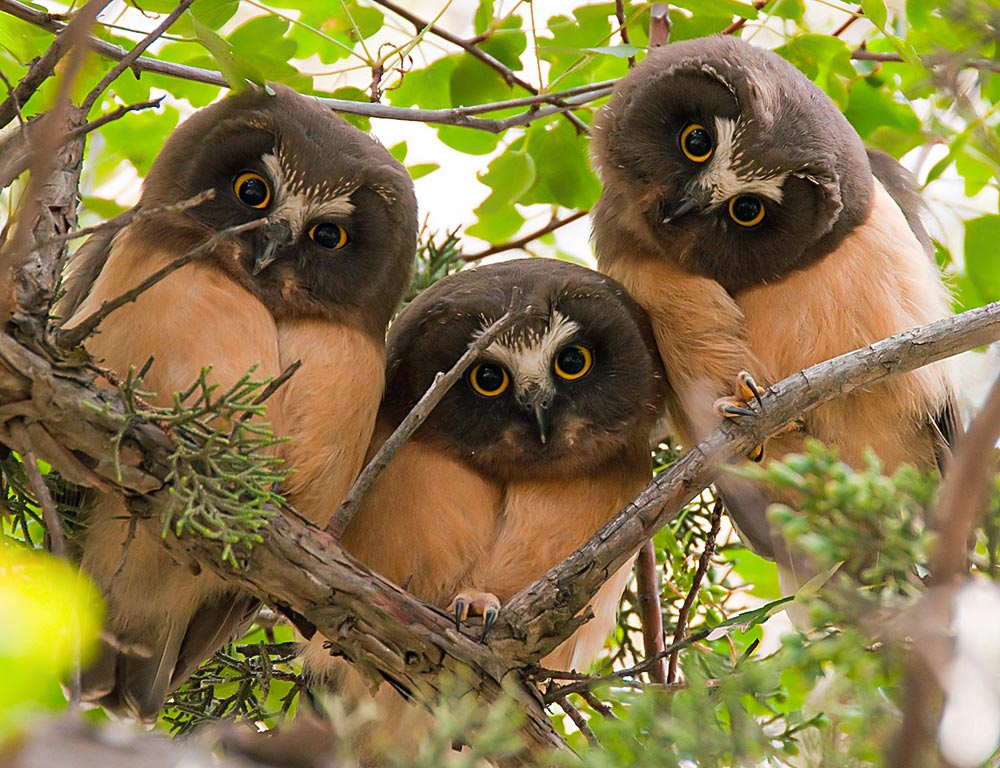
The Northern Saw-whet Owl, Aegolius acadicus, is a small, nocturnal owl known for its cat-like face and large, round, yellow eyes. This species has a brown plumage mottled with white, making it well camouflaged against the bark of trees.
Despite its diminutive size, the Northern Saw-whet Owl is a proficient hunter, feeding on insects, small rodents, and other small prey, using its sharp talons and beak.
Found across North America, particularly in dense forest habitats, it nests in tree cavities and is known for its elusive nature.
The “saw-whet” name comes from one of its calls, reminiscent of a saw being sharpened on a whetting stone. Due to its small size and secretive habits, humans often ignore the Northern Saw-whet Owl.
| Kingdom | Animalia |
| Phylum | Chordata |
| Class | Aves |
| Order | Strigiformes |
| Family | Strigidae |
| Genus | Aegolius |
| Species | A. acadicus |
21. Hawk
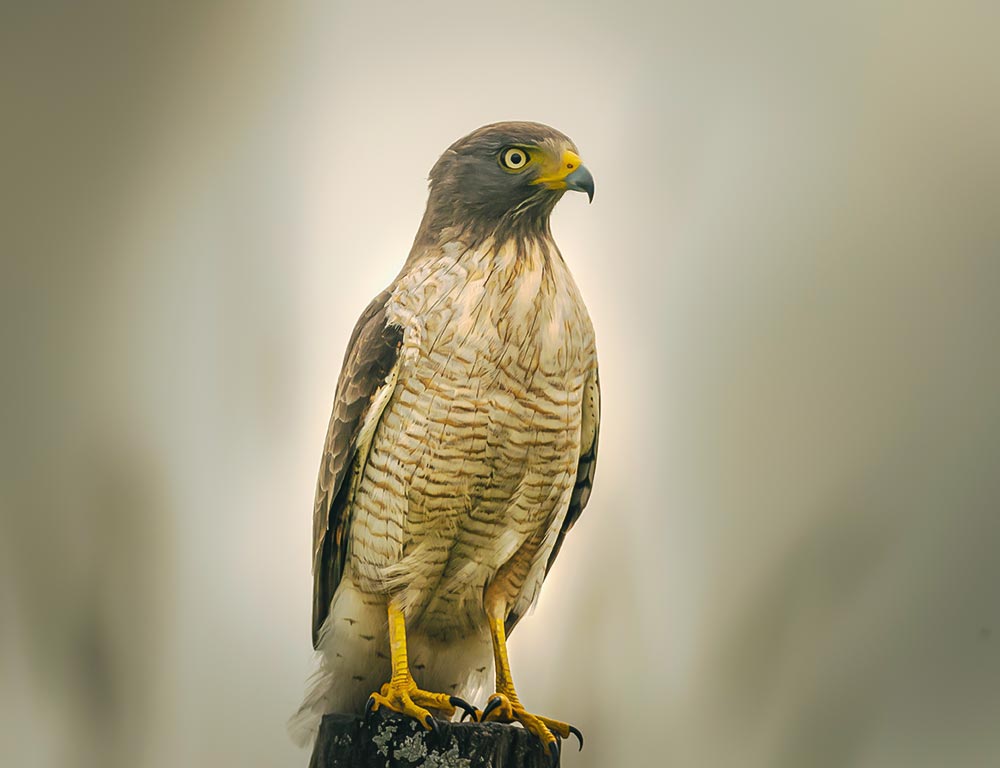
| Kingdom | Animalia |
| Phylum | Chordata |
| Clade | Dinosauria |
| Class | Aves |
| Order | Accipitriformes |
| Family | Accipitridae |
Conclusion
Birds of prey in North Dakota play a crucial role in maintaining the ecosystem’s balance by controlling populations of small mammals and ensuring overall biodiversity.
These stunning creatures, such as the bald eagle, peregrine falcon, and great horned owl, are indicators of healthy habitats and serve as flagship species and symbols of conservation.
Through habitat preservation, awareness programs, and responsible human actions, we can continue to protect and nurture these majestic birds of prey, ensuring their survival and the preservation of North Dakota’s natural heritage for future generations.